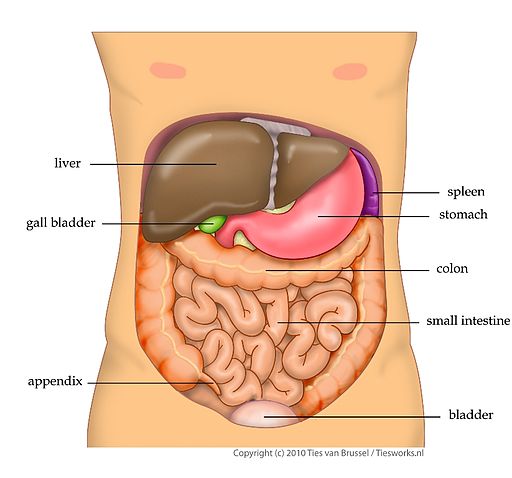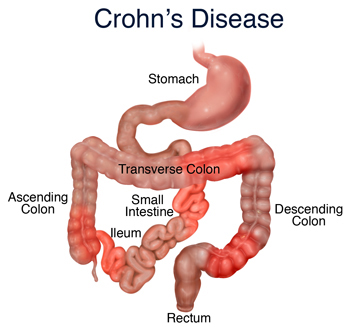Crohn’s Disease is a form of recurring inflammatory bowel disease, or IBD, found in roughly 500,000 people in the United States. Identified in 1932 when Dr. Burrill Crohn and two colleagues, Dr. Leon Ginzburg and Dr. Gordon D. Oppenheimer, published a paper outlining the major symptoms of IBD, Crohn’s Disease has stepped out as a unique type of IBD.
A Unique IBD
Unlike any other IBD, the inflammation found in Crohn’s involves every layer of the intestines resulting in painful and debilitating ulcers. Though primarily found in the small intestines, the inflammation can be found throughout the gastrointestinal tract from the throat to the anus with spaces of healthy tissue between areas of severe deterioration. Symptoms can include:
- diarrhea
- cramping
- weight-loss
- malnutrition
- rectal bleeding caused by fissures.
The good news is that these symptoms can go into remission which means that there are often weeks, months, or even years between flare-ups.
The most common concerns regarding Crohn’s involve untreated flare-ups that can cause fistulas in the gastrointestinal tract. Fistulas are an unnatural joining of two separate organs caused by an ulcer burning its way completely through both organs.
As the body tries to heal itself, a canal is created between the two organs. These complications are usually fixed with surgery and very aggressive pharmacological treatment of the Crohn’s Disease.
Cause and Treatments
Though the cause of the disease is largely unknown, a basic understanding of the symptoms has given physicians and scientists a foundation on which to treat it. Believed to be an over-reaction of the auto-immune system, medications that slow down or stop the immune systems response have been shown to be a great benefit to Crohn’s sufferers.
Additionally, anti-inflammatories work at lowering the painful swelling in the intestines, making eating less of a painful occurrence, as well as lessening the symptoms of the disease.
Dr. Crohn’s and his associates were able to identify Crohn’s from other inflammatory bowel diseases because of the severe indicators later in the progression of the ailment. In the early stages, however, it can be very difficult to single Crohn’s Disease out from other IBDs like Irritable Bowel Syndrome or Ulcerative Colitis.
An upper gastrointestinal scan, called a sigmoidoscopy, may be required to pinpoint Crohn’s from the other possibilities, as only Crohn’s will show deterioration throughout all layers of the intestinal wall.
Who is at Risk?
With approximately 1 in 545 people affected in the United States alone, a common denominator would be useful in determining how or why Crohn’s Disease occurs.
Only 20% of those definitively diagnosed with Crohn’s can find a family history, though, and the disease can be found evenly spread across most gender and racial lines, though some studies have shown a higher percentage in people of Jewish descent. African Americans are found to have a slightly less likely chance of getting the disease.
While it can strike at any age, the symptoms of Crohn’s are most often found in those in their 20s and 30s.
As education and research continue, more and more Crohn’s sufferers are finding relief during flare-ups, and are even finding that their remissions are lasting longer each time. Though no true cure has been found yet, the more severe problems associated with the disease are now treatable and surgery is becoming less and less necessary.


